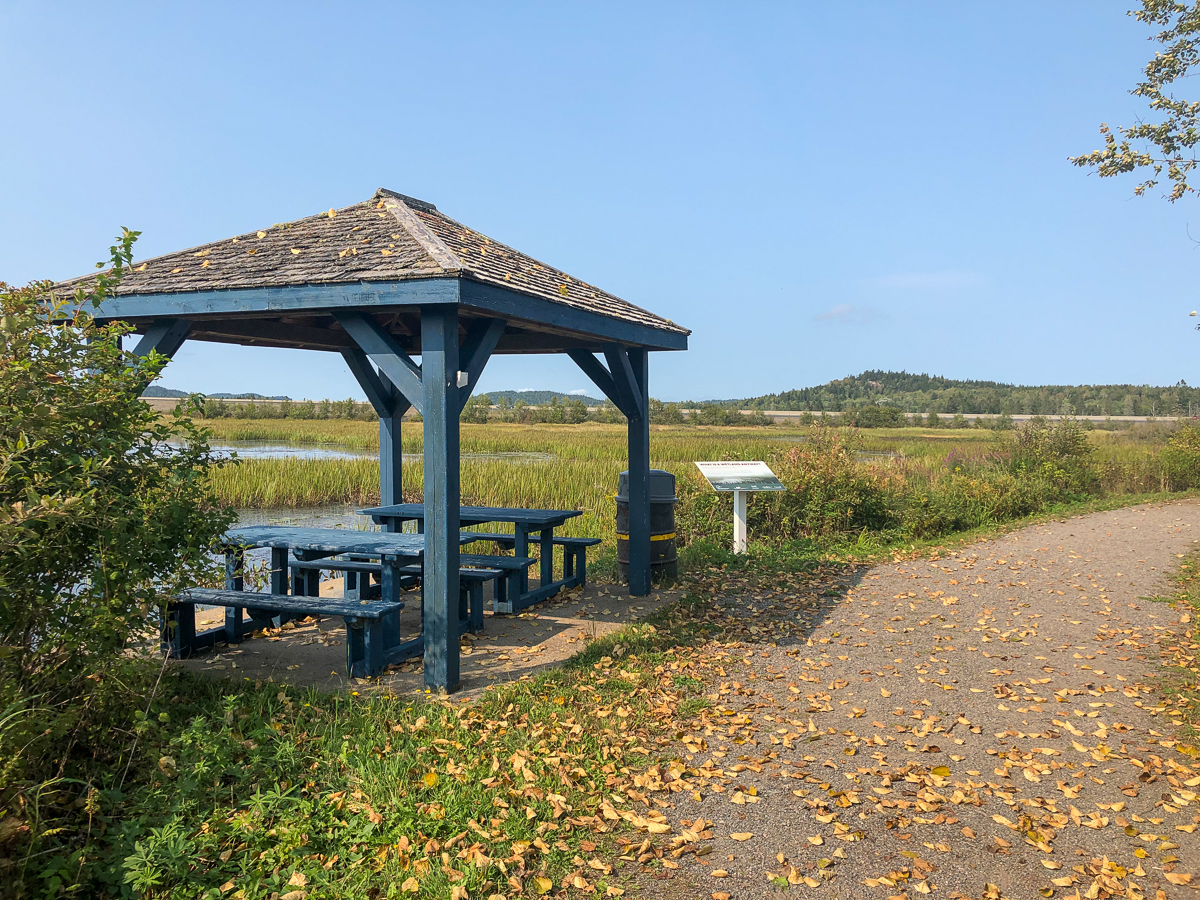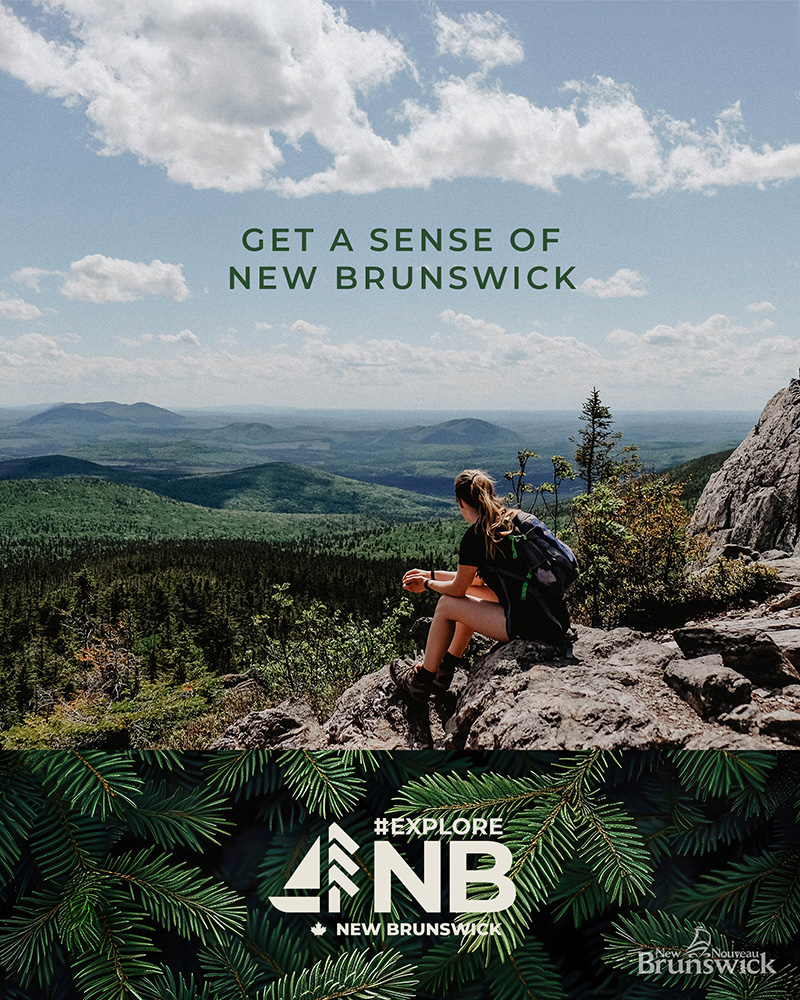Saint George Marsh Trail
Quick Facts
| Difficulty | accessible |
| Trail Type | linear |
| Distance | 2.2 km |
| Estimated Time | 1 hr 30 mins return |
| Surface Type | crushed rock |
| Elevation Change | 12 meters |
| Features | marsh, river |
| Trail Markers | none but easy to follow |
| Scenery Rating | beautiful |
| Maintenance Rating | well maintained |
| Cell Reception | strong |
| Dog Friendly | on a leash |
| Fees | none |
Map
Directions
On Route 1 take exit 52 to St. George and at the stop sign turn torwards St. George. At the next stop sign turn left towards St. George onto Brunswick Street. Drive for 1.2 kilometres and after passing the grocery store turn left onto Marsh Lane. After a short distance turn right into the parking lot for the curling club. You will find the trail start in the back right corner of the parking lot.
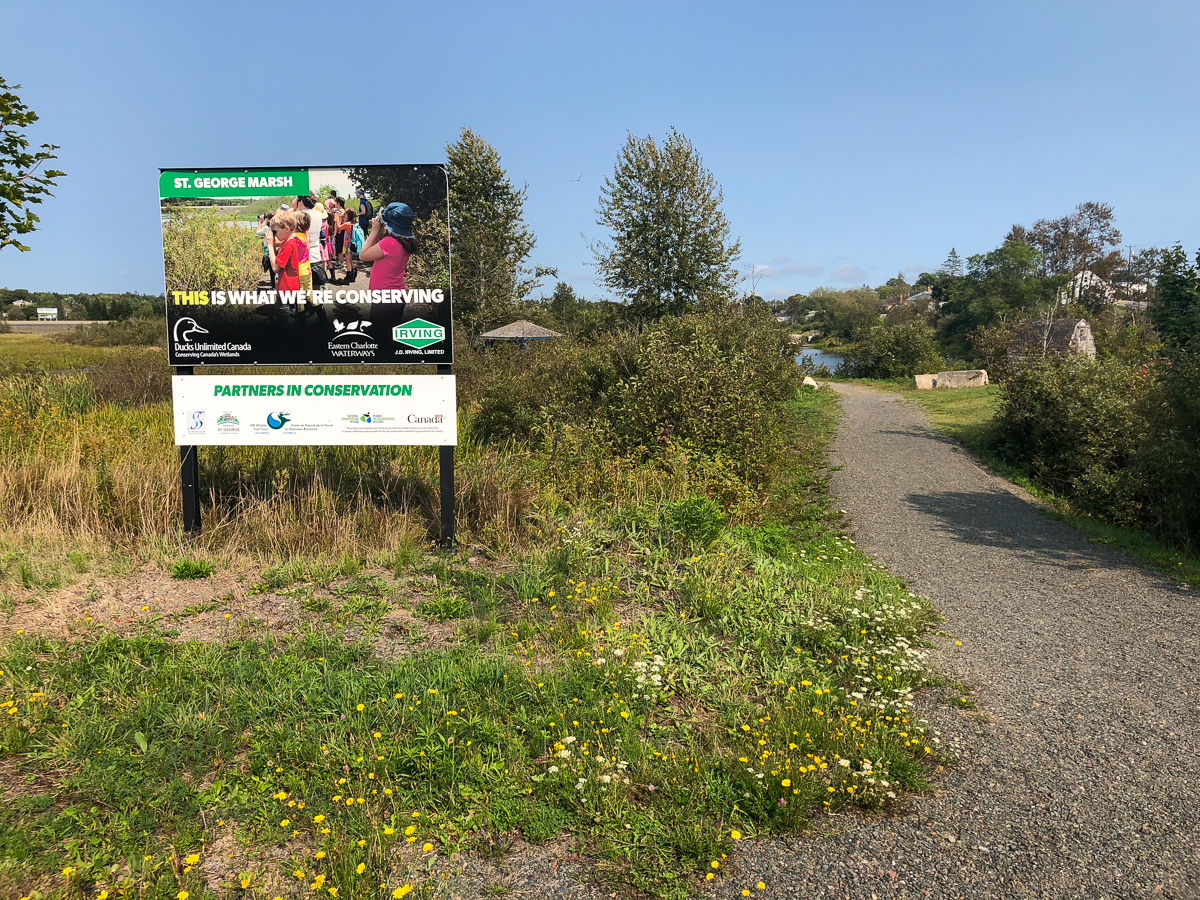
From the Sign
History of St. George
The Magaguadavic River gets its name from New Brunswick's Maliseet People. Europeans settled the Town of St. George in 1784, and throughout the 19th century, the town's economy was based on lumber, shipbuilding and granite mining.
Today, the river not only remains central to St. George's livelihood (the town is a hub in the Bay of Fundy's aquaculture industry) - it's also the natural heart of the community. And St. George Marsh is a part of that.
Located on Magaguadavic floodplain, upriver from First Falls, St. George Marsh would historically flood during heavy rains, creating a semi-permanent wetland. In 1993, Ducks Unlimited Canada, in partnership with landowner J.D. Irving, Limited, restored the area to a permanent wetland, creating the biodiverse ecosystem you're exploring today.
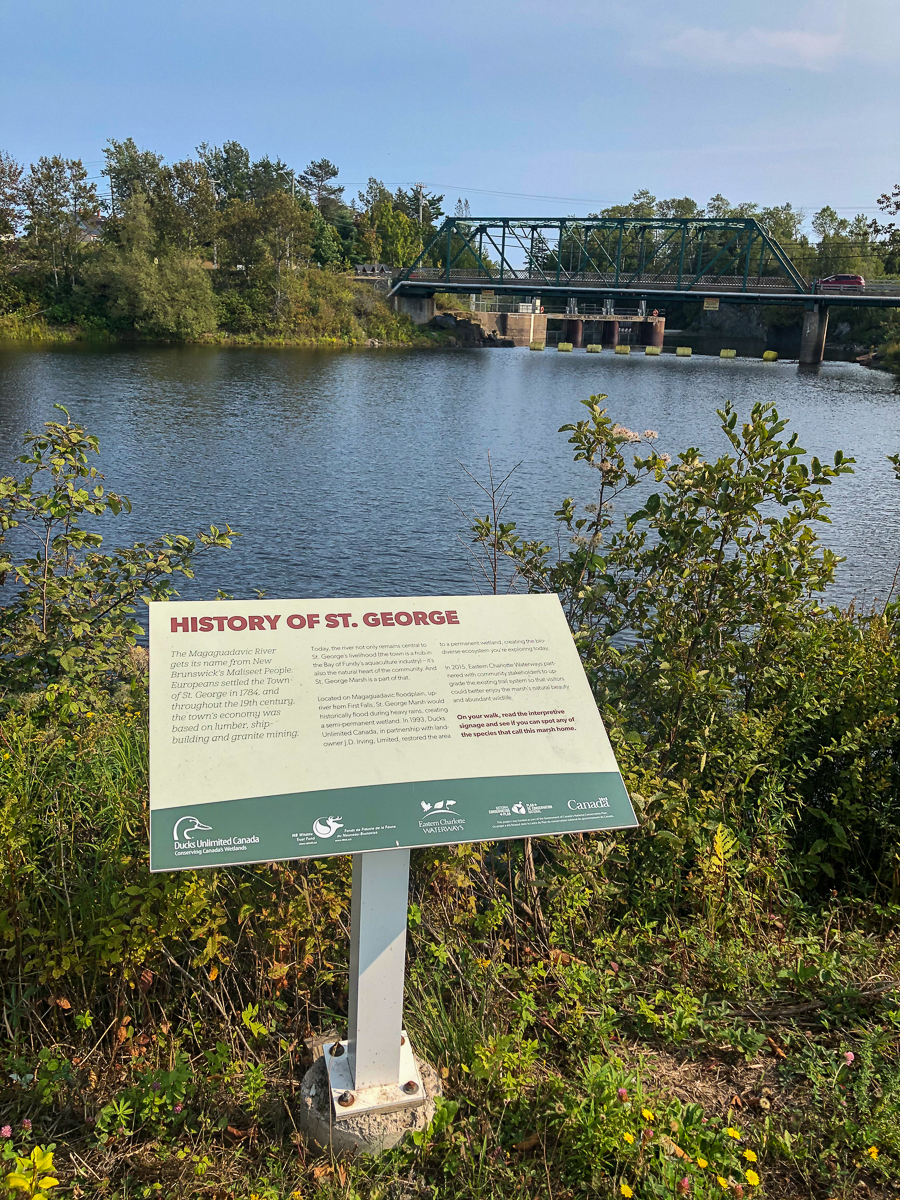
In 2015, Eastern Charlotte Waterways partnered with community stakeholders to upgrade the existing trail system so that visitors could better enjoy the marsh's natural beauty and abundant wildlife.
On your walk, read the interpretive signage and see if you can spot any of the species that call this marsh home.
Description
There is a lot to see on the Marsh Trail. The wide crushed rock trail travels between the river and the marsh. This provides different habitats for many different plants and animals. There are many interpretive signs along the trail to describe them (see below). After crossing under the highway you will be looking across the river at the Day Adventure Center. The trail then turns away from the river and travels through a more wooded area before coming out along the far side of the marsh. On this section of trail you will find lookout platforms and platforms for raptors' nests. The trail comes to an end at a gate on Manor Road.

From the Sign
What is a Wetland Anyway?
Wetlands are some of the most biodiverse ecosystems in the world, and important to every living thing on Earth.
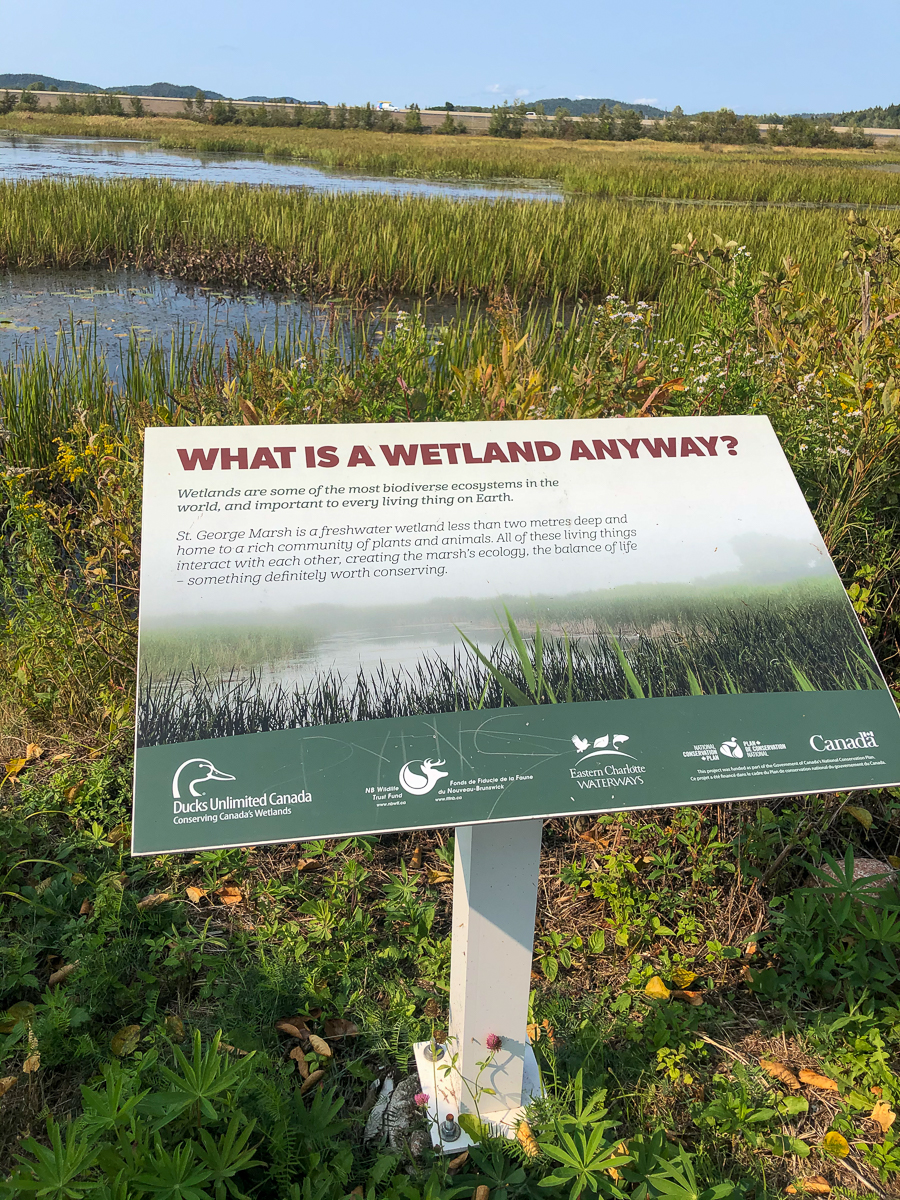
St. George Marsh is a freshwater wetland less than two metres deep and home to a rich community of plants and animals. All of these living things interact with each other, creating the marsh's ecology, the balance of life - something definitely worth conserving.
From the Sign
Marsh Insects
You can find all kinds of marsh insects skimming the water's surface or swimming beneath. Grab a dipping net to see what kind of little creatures call St. George Marsh home.
Dragonflies (O. odonatan), one of the most common insects found in marshes, lay their eggs on the water's surface. Dragonfly larvae actually live in the water before moving on to reed stocks when they become adults.
Giant water bugs (Belostoma) eats mostly insects, but will sometimes gorge themselves on a bigger feed of tadpole or fish. A water bug's lethal bite releases toxic substances that kills prey quickly, and can be painful for humans too, so watch out!
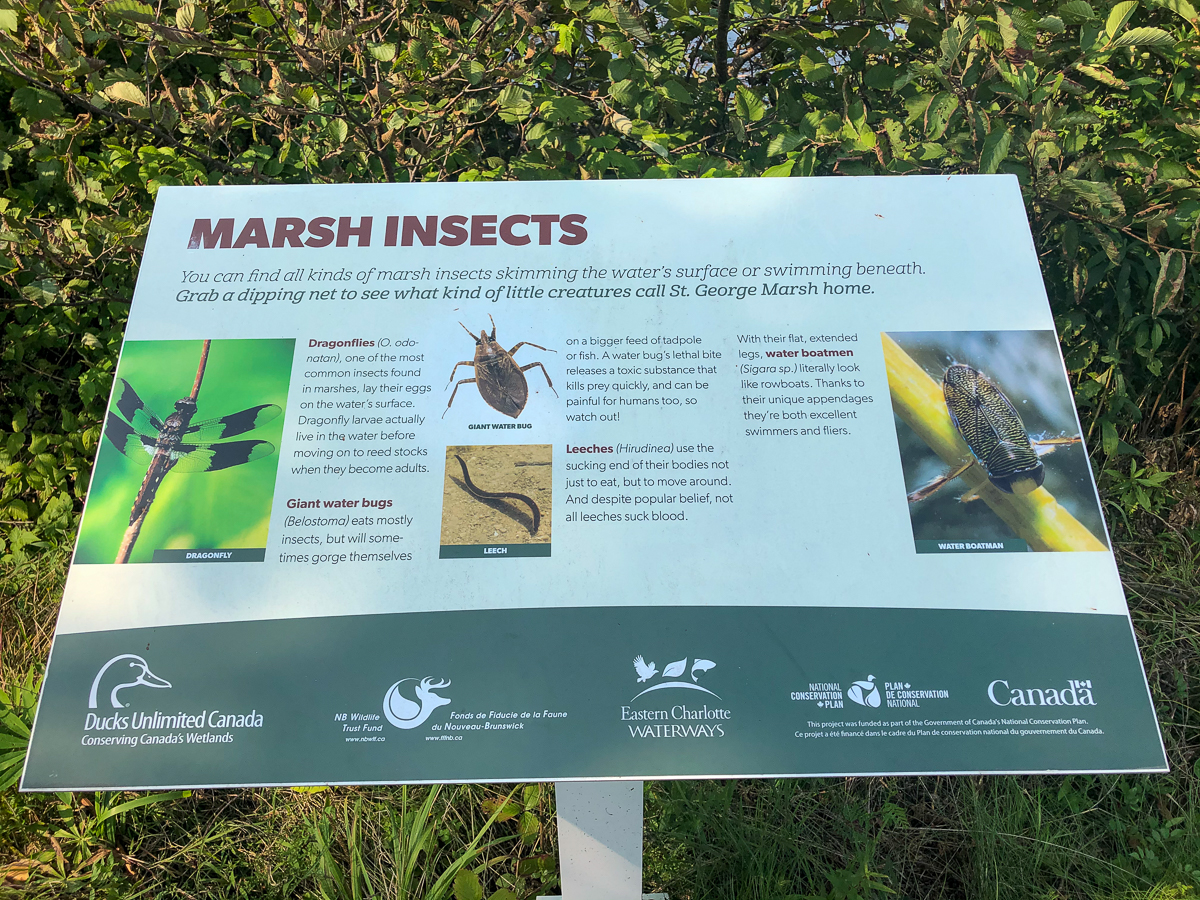
Leeches (Hirudinea) use the sucking end of their bodies not just to eat, but to move around. And despite popular belief, not all leeches suck blood.
With their flat, extended legs, water boatmen (Sigara sp.) literally look like rowboats. Thanks to their unique appendages they're both excellent swimmers and fliers.
From the Sign
Songbirds
Look for songbirds perched on small branches or flying close to the water's surface, or simply listen for their calls. What do you hear?
New Brunswick's provincial bird, the black-capped chickadee (Poecile atricapillus), is named after its distinctive call. Extremely curious, they often approach humans without fear, and can lower their body temperature to save energy.
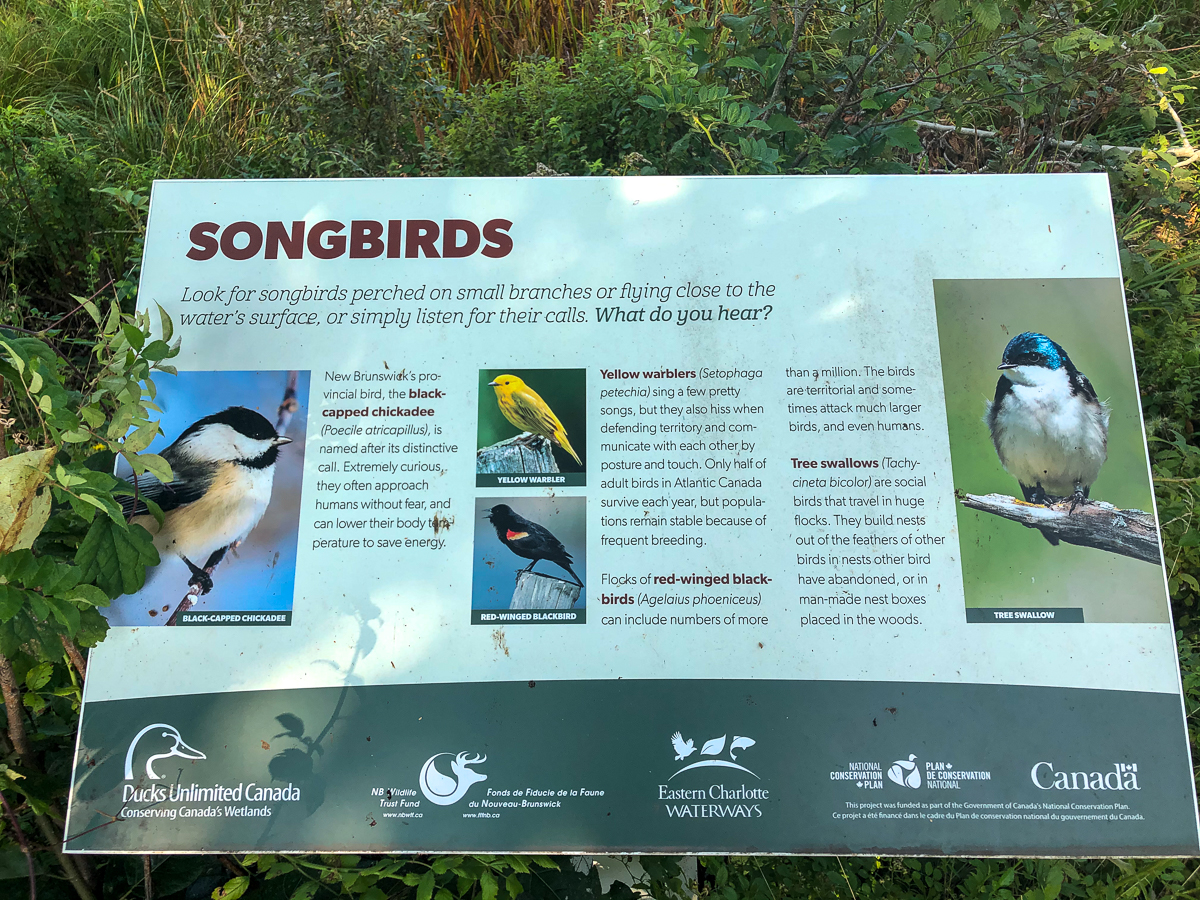
Yellow warblers (Setophaga petechia) sing a few pretty songs, but they also hiss when defending territory and communicate with each other by posture and touch. Only half of adult birds in Atlantic Canada survive each year, but populations remain stable because of frequent breeding.
Flocks of red-winged blackbirds (Agelaius phoeniceus) can include numbers of more than a million. The birds are territorial and sometimes attack much larger birds, and even humans.
Tree swallows (Tachycineta bicolor) are social birds that travel in huge flocks. They build nests out of the feathers of other birds in nests other bird have abandoned, or in man-made nest boxes placed in the woods.
From the Sign
Birds of Prey
You can find birds of prey either perched in trees or flying high. Look up and see if you can spot any of these predators in the sky.
Ospreys (Pandion haliaetus), found on every continent except Antarctica, have barbed talons and excellent eye-sight, which helps them spot fish from more than 35 metres away.
You can find bald eagles (Haliaeetus leucocephalus), named for their white heads, near large bodies of water where food is abundant and where they can build their large nests - the biggest of any North American bird!
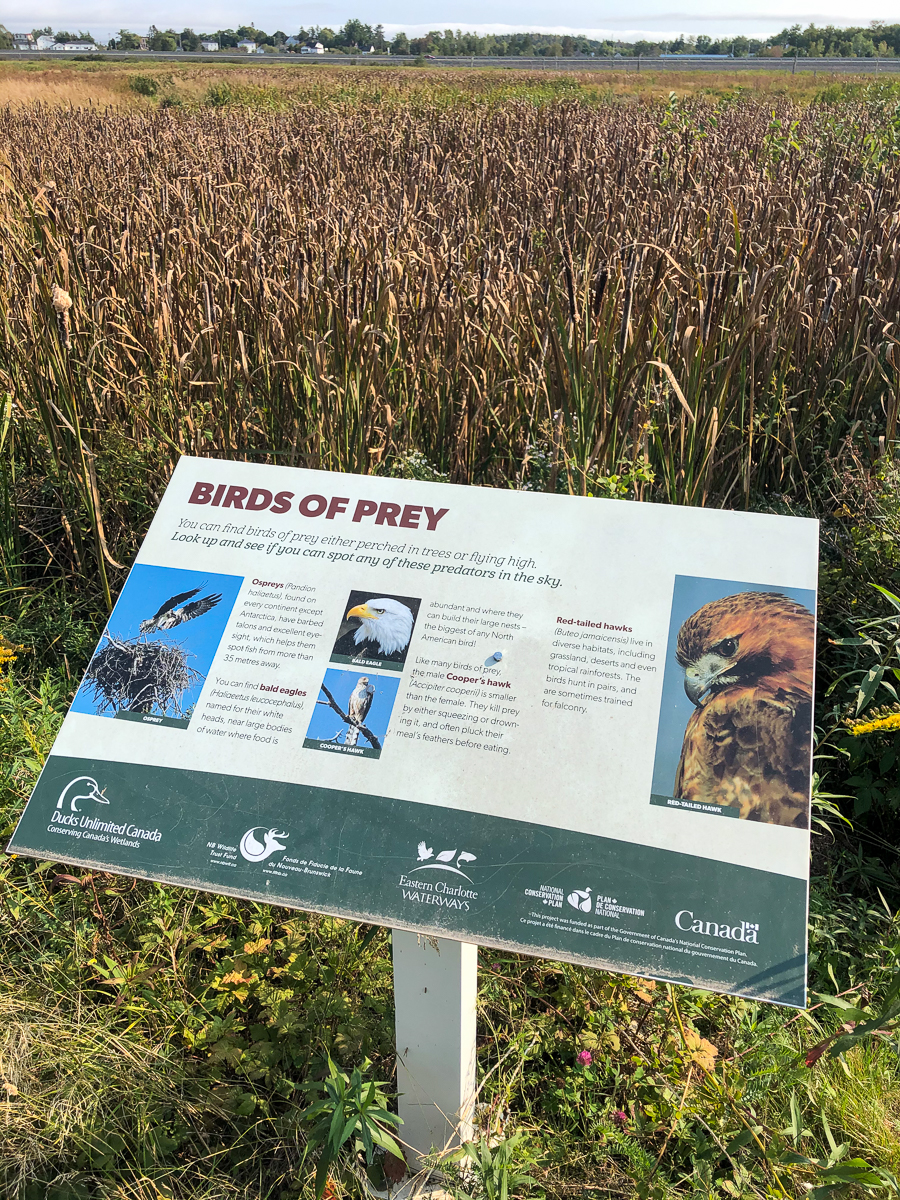
Like many birds of prey, the male Cooper's hawk (Accipiter cooperii) is smaller than the female. They kill prey by either squeezing or drowning it, and often pluck their meal's feathers before eating.
Red-tailed hawks (Buteo jamaicensis) live in diverse habitats, including grassland, deserts and even tropical rainforests. The birds hunt in pairs, and are sometimes trained for falconry.
From the Sign
Waterfowl
Ducks and geese live on or near the water. It's where they breed, raise their young and find food. Look closely between the cattails. Spot any divers or dabblers?
American black ducks (Anas rubripes) sometimes mate with other duck species, including mallards. These large ducks are also known for their wariness, making them a coveted game bird.
The colourful wood duck (Aix sponsa) uses its sharp claws for perching in trees. It's one of a few duck species able to produce two broods in one season.
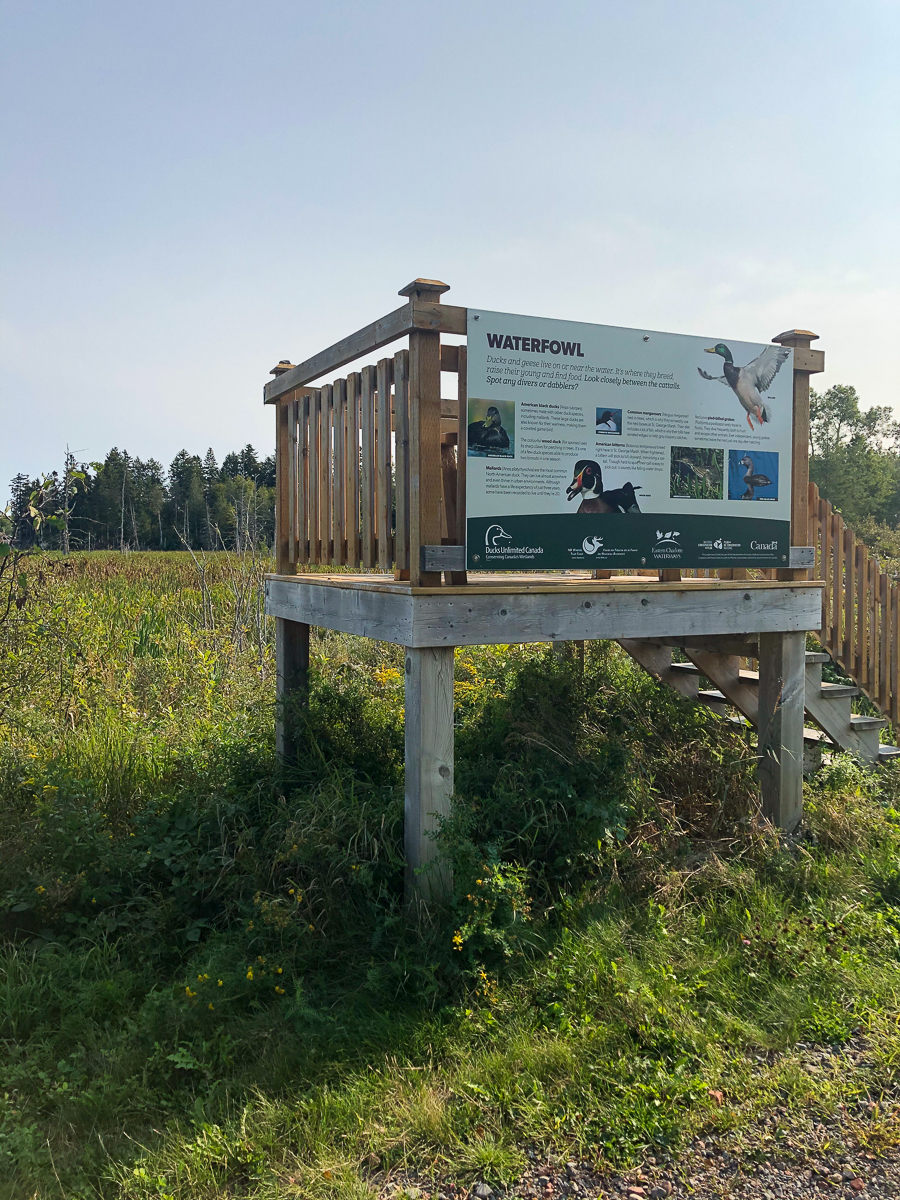
Mallards (Anas platyrhynchos) are the most common North American duck. They can live almost anywhere and even thrive in urban environments. Although mallards have a life expectancy of just three years, some have been recorded to live until they're 20.
Common mergansers (Mergus merganser) nest in trees, which is why they so readily use the nest boxes at St. George Marsh. Their diet includes a lot of fish, which is why their bills have serrated edges to help grip slippery catches.
American bitterns (Botaurus lentiginosus) breed right here in St. George Marsh. When frightened, a bittern will stick its bill skyward, mimicing a cattail. Though hard to spot, their call is easy to pick out: it sounds life falling water drops.
Reclusive pied-billed grebes (Polilymbus podiceps) rarely travel in flocks. They dive frequently both to hunt and escape other animals. Even independent, young grebes sometimes leave the nest just one day after hatching.
From the Sign
Marsh Plants
Specially designed to live in wet soil, marsh plants are an important food source for many wetland critters.
Algae uses the sun's energy to grow, producing food for small invertebrates, which in turn become food for many species of birds.
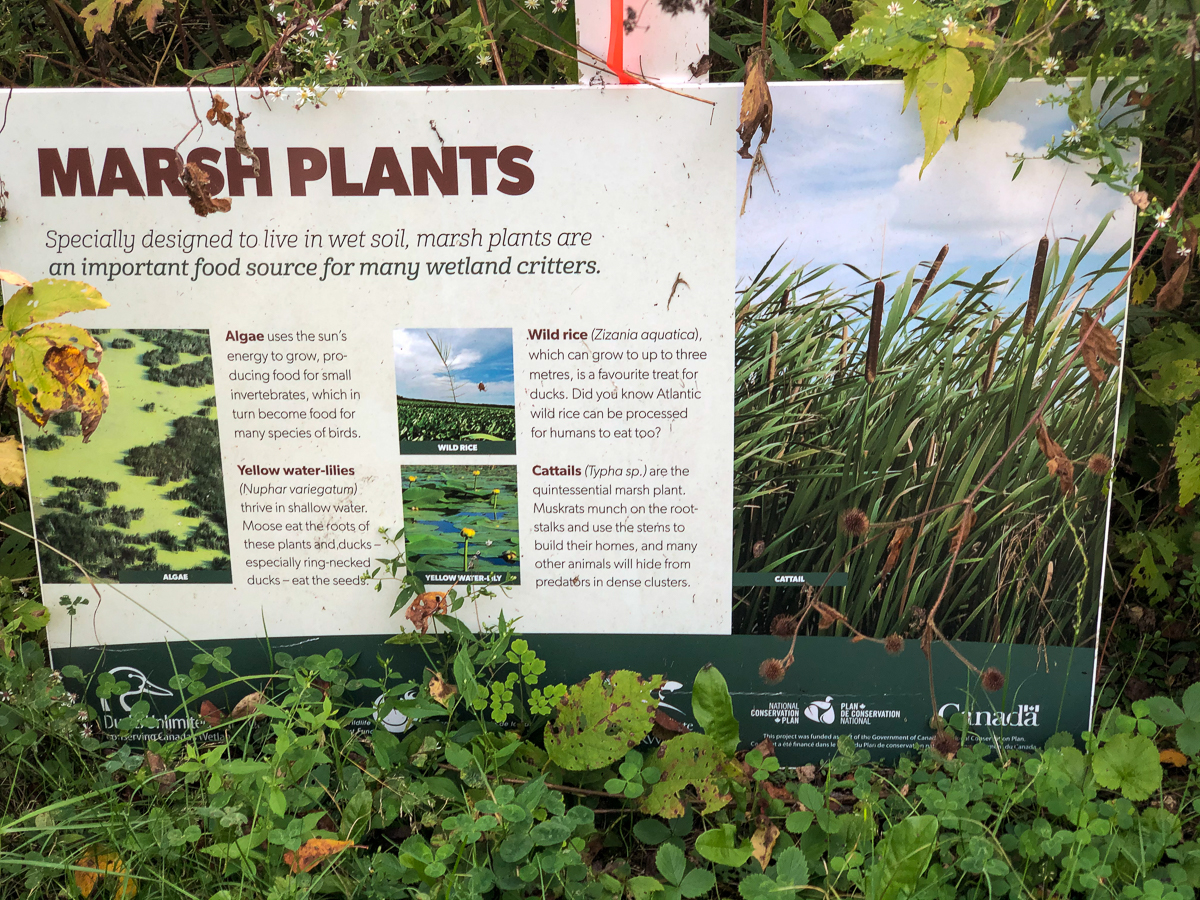
Yellow water-lilies (Nuphar variegatum) thrive in shallow water. Moose eat the roots of these plants and ducks - especially ring-necked ducks - eat the seeds.
Wild rice (Zizania aquatica), which can grow to up to three metres, is a favourite treat for ducks. Did you know Atlantic wild rice can be processed for humans to eat too?
Cattails (Typha sp.) are the quintessential marsh plant. Muskrats munch on the root-stalks and use the stems to build their homes, and many other animals will hide from predators in dense clusters.
Trail Last Hiked: September 9, 2020.
Page Last Updated: October 23, 2021.
